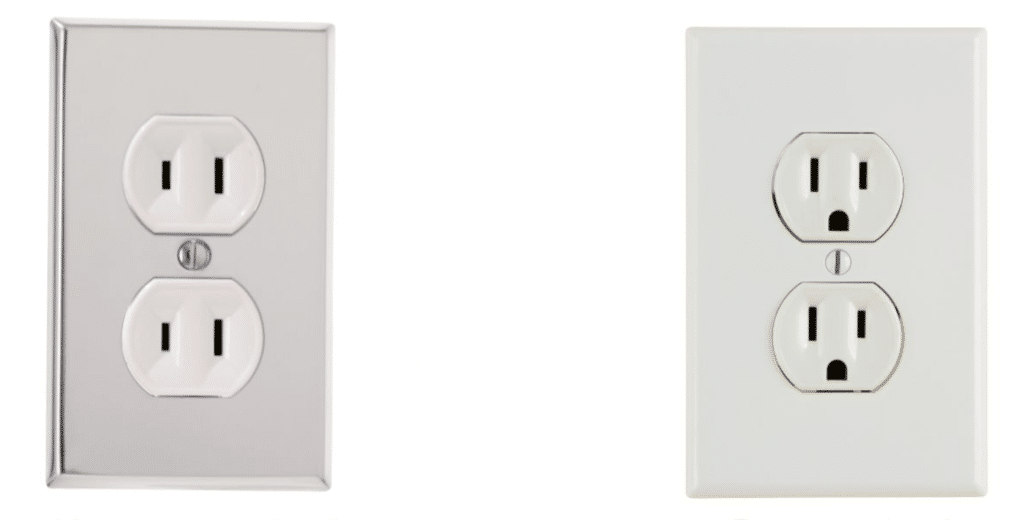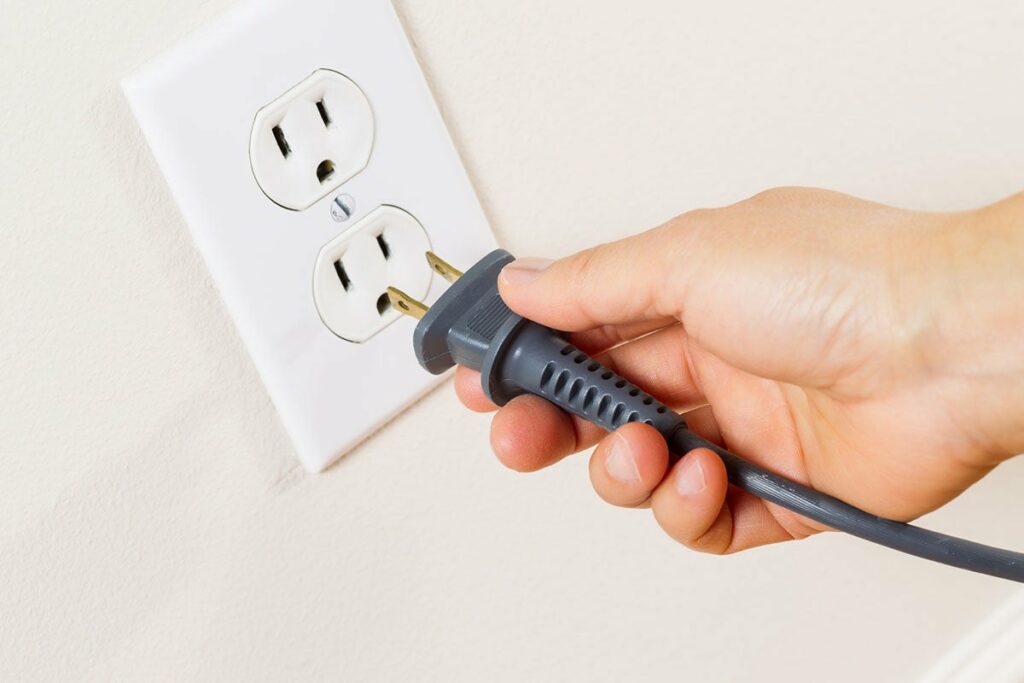Most homes built before the 1960s have ungrounded receptacles. After the National Electric Code (NEC) of 1962, however, houses were required to have grounded receptacles.
So, you might ask: “Why the change?” The answer is safety. Our article will discuss the differences between grounded and ungrounded outlets and the dangers associated with the latter.
Difference Between Grounded and Ungrounded Outlets

The primary distinction between grounded and ungrounded receptacles is the number of prongs (openings) they have: three for grounded outlets and two for ungrounded outlets. As a result, grounded outlets are also called “three-pronged,” and ungrounded outlets are “two-pronged.”
Older electrical systems, specifically homes and buildings up to the 1960s, have ungrounded outlets. However, they didn’t adhere to the code standards for safe electrical flow. According to NEC, two-pronged receptacles increase the possibility of electrocution or electrical fire.
As a result, NEC has defined grounded outlets as mandatory electrical components since 1962. They’re specifically designed to secure and reduce the possibility of fire or unexpected shock with the help of a so-called “grounding wire.”
To better understand the mechanism of grounded outlets, let’s explain the general composition of outlets.
The Composition of an Outlet

An outlet has two main wires: hot and neutral wires. The hot wire carries electricity from the circuit, through the outlet, and into the plugged-in device, while the neutral wire brings the electricity back from the device, through the outlet, and into the circuit, in a cycle.
These two wires are necessary for transferring electrical currents from point A to point B, so we see them on grounded and ungrounded outlets. However, grounded outlets have something that ungrounded outlets don’t — a third “grounding” wire.
The Protective Ability of a Grounding Wire
The grounding wire shields from an electrical fire or unexpected shock by being an alternate route for excess electricity to travel through, protecting people and property.
In the event of a power surge, which is a sudden spike in electricity, the grounding wire neutralizes and transmits the excess electricity into the ground. Without it, the extra electricity will take other routes, and damage wires, destroy devices, cause an electrical fire, or electroshock people.
So while the hot and neutral wires are the primary route of electrical currents, the grounding wire is the backup path. Thanks to it, the excess electricity won’t go through your plugged devices and damage them or cause more severe harm to your environment.
The Dangers of Ungrounded Outlets
The danger associated with an ungrounded outlet is that the excess electricity from a power surge is free to travel wherever the circuit leads it, from the palm of your hand to the device you’re plugging into the outlet. In some instances, the excess electricity might even damage the other wires from the circuit and start a fire.
The reason for this is that the electricity we use follows a closed circuit. Its path is uninterrupted and closed. From the circuit, it reaches the plugged-in device through the hot wire, and then the device’s plug returns to the circuit through the neutral wire. However, the excess power the device is not using can’t be returned — leaving its path unpredictable and open.
For many years, ungrounded receptacles were the norm. However, NEC replaced ungrounded outlets with grounded outlets to provide a safer and more secure energy transmission method.
Grounded vs. Ungrounded Outlet Comparison Table
| Category | Grounded Outlet | Ungrounded Outlet |
| Known as | Three-pronged | Two-pronged |
| Installed in | Newer homes built after the 1960s | Older homes built before the 1960s |
| Appearance | Three prong openings: hot, neutral, and ground | Two prong openings: hot and neutral |
| Electrical safety | The ground wire protects devices, people, and electrical systems from dangerous power surges. It does so by neutralizing and redirecting the excess voltage into the ground. | Doesn’t provide any electrical protection due to the absence of the third “grounding” wire. In the event of an electrical malfunction, the extra voltage will either damage your device, cause an electrical fire, or electroshock you. |
| Status | Mandatory | No longer mandatory |
Do You Reside in a Home With Ungrounded Outlets?
As we already discussed, ungrounded outlets are against the National Electric Code (NEC). So if you currently reside in a condo or home without grounded outlets, we recommend speaking with a qualified electrician about updating your system.
If you’re a tenant and don’t own a home, it’s best to discuss upgrading the electrical cabling system with the homeowner to make sure both you and the property are safe. Either way, the upgrade will cost you, but it’s an investment that could save your life or help you avoid higher damage costs after power surges.
Conclusion
Knowing the difference between grounded and ungrounded outlets will keep you and your electronics safe.
The National Electric Code (NEC) effectively outlawed ungrounded receptacles because they posed a safety risk. Unlike grounded receptacles, they lack a third “grounding” wire that directs surplus electricity into the ground.
The outlet minimizes the chances of an electrical fire, damaged devices, or electrocuted people by directing extra electricity away from you and your gadgets and into the ground.
Differentiating these two types of outlets in real life is simple: an ungrounded outlet has two openings, whereas a grounded outlet has three. Older homes built before the 1960s usually have two-pronged outlets, so if you live in one, you might want to start thinking about updating your electrical system with grounded outlets.
On the other hand, if you live in a more contemporary home, you most likely already have a grounded system set up, so you’re safe and secure!